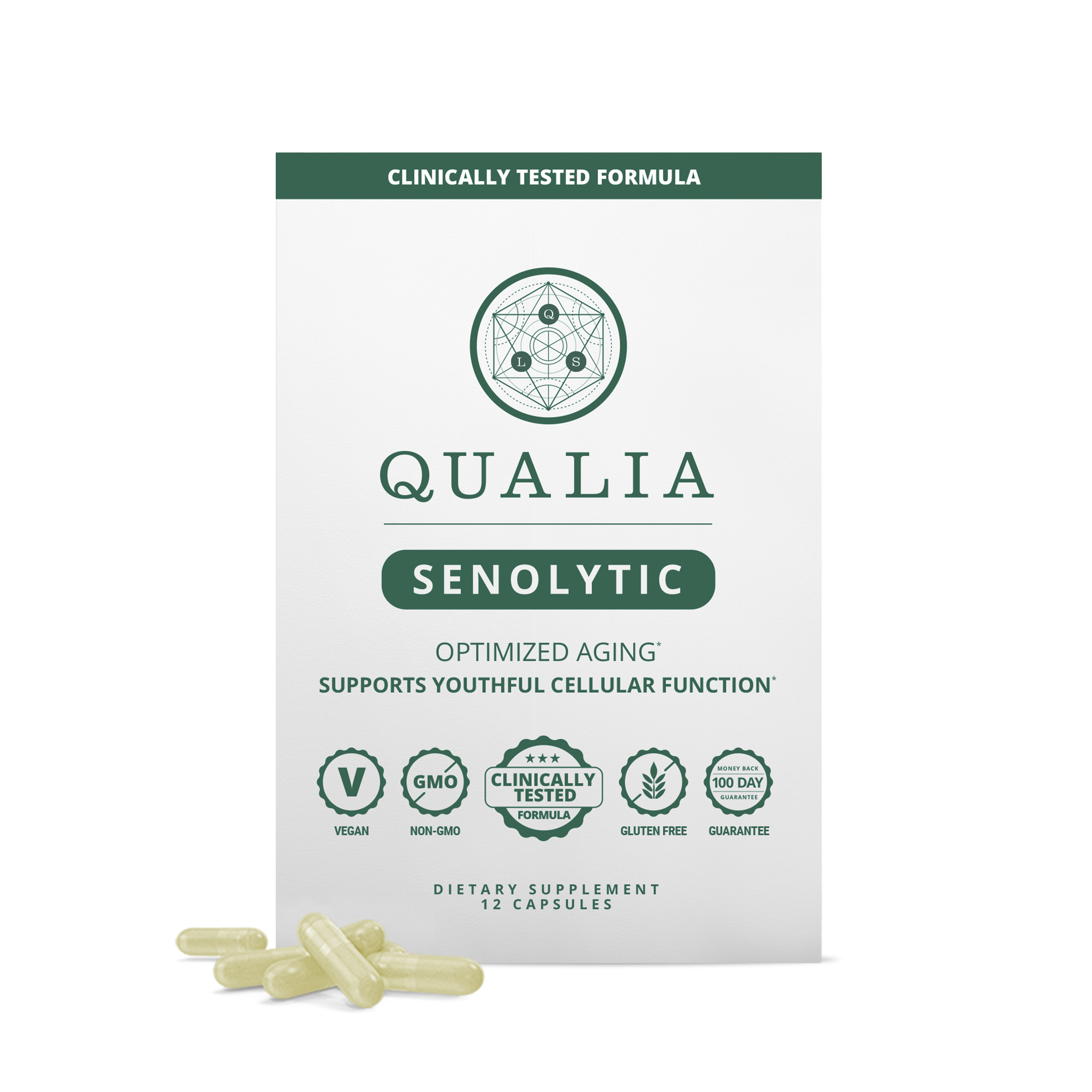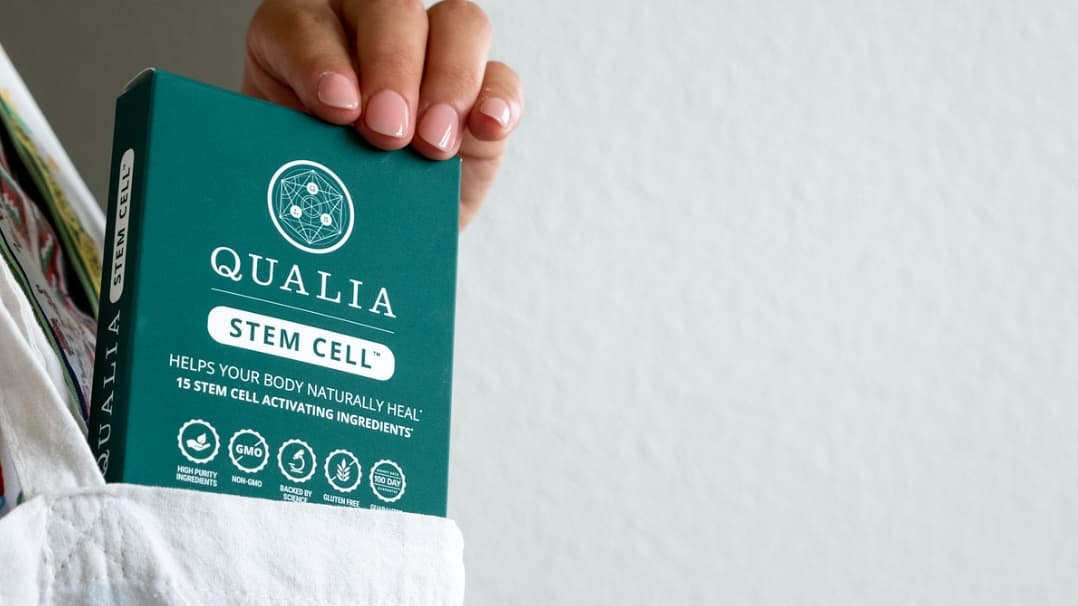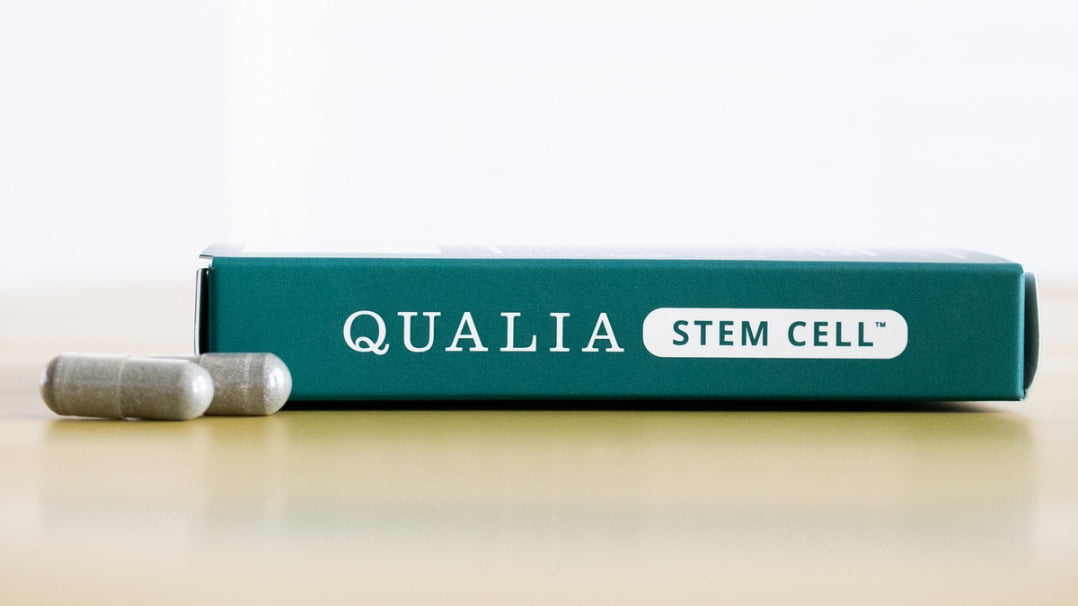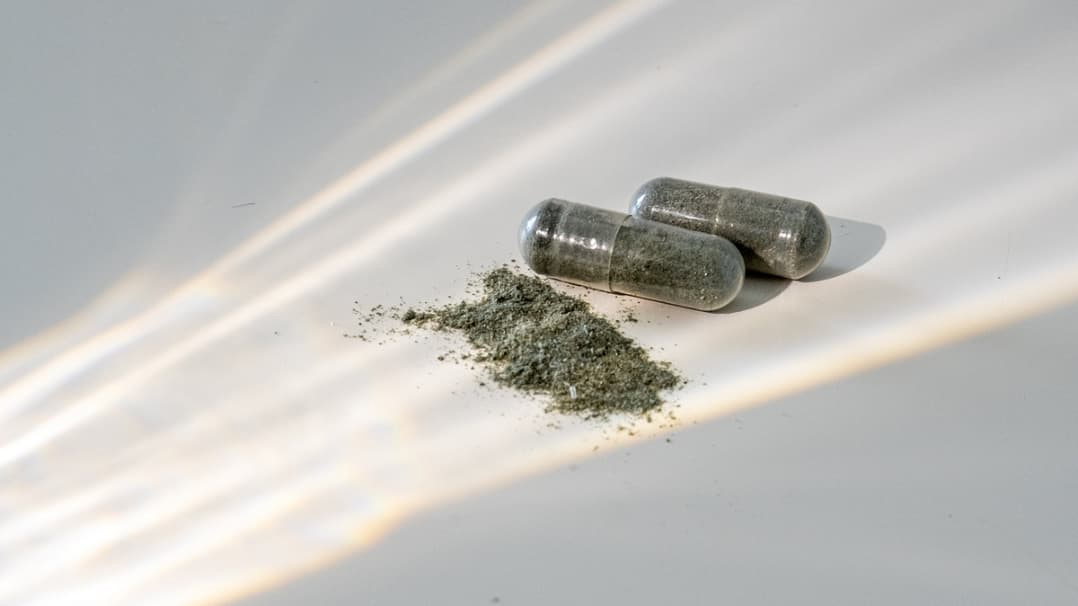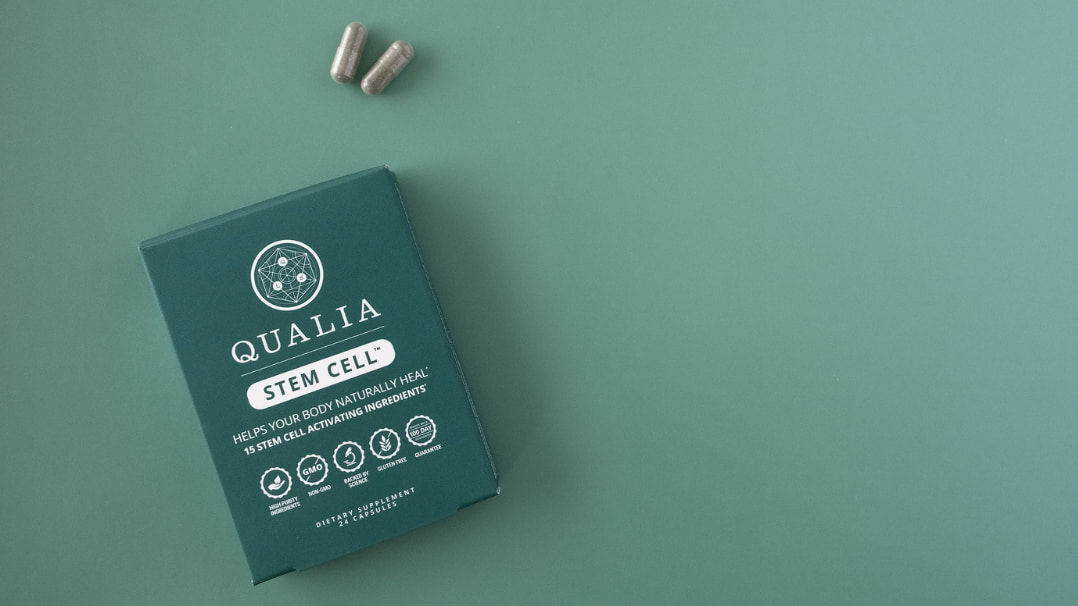Senactiv®

Senactiv® (previously called ActiGin) is a patented combination of two adaptogenic extracts—notoginseng root (Panax notoginseng, aka san-chi ginseng) and sweet chestnut rose fruits (Rosa roxburghii). Both extracts have a long history of use in Traditional Chinese Medicine. Notoginseng is rich in bioactive compounds common to plants in the ginseng family, namely polysaccharides and saponins. Ginsenosides are the main saponins in notoginseng, with Ginsenoside Rg1 being one of the most abundant ginsenosides in notoginseng. R. roxburghii is native to the southwest region of China. It is known for its high vitamin C, superoxide dismutase (SOD), and flavonoid content. R. roxburghii has strong antioxidant properties. Senactiv® is the result of more than 10 years of research and development. It has been used in 5 human studies, with more studies in the pipeline. The emphasis of the studies has been on exercise performance, especially in functions related to muscle energy, recovery, and senescent cells.*
TOP BENEFITS OF SENACTIV®
Supports exercise performance*
Supports healthy aging *
Supports cellular health *
QUALIA’S SENACTIV® SOURCING
Senactiv® is a patented ingredient made from highly purified and fractionated extracts of Panax notoginseng and Rosa roxburghii. It is produced by NuLiv Science.
Senactiv® is standardized to contain not less than 30% saponins, including not less than 10% ginsenoside Rg1. It’s also standardized for polyphenols (≥2%) and vitamin C (≥0.6%).
Senactiv® is a registered trademark of NuLiv Science USA Inc.
Senactiv® is non-GMO, gluten-free, vegan. It is Informed Choice Ingredient and Informed Sport Certified, Kosher certified, and Halal certified.
SENACTIV® FORMULATING PRINCIPLES AND RATIONALE
In human and animal research studies, rather than seeing Senactive® mentioned by name, you’ll see Rg1 supplied by NuLiv Science, Inc., Brea, CA, USA. The amount of Rg1 used in the human studies has been 5 mg [1–5], while we are recommending a 50 mg serving of Senactive®. This can be a bit confusing. The makers of Senactive® began studying this extract before they decided on this trademarked name. So, when they submitted articles to scientific journals for publication, they referred to it by one of the compounds used to standardize the extract, specifically the Rg1 from the Panax notoginseng (some journals also prefer trademarked names not be used). The key point is that we are using the extract from these studies at the studied serving, with 50 mg of SenActiv® providing the 5 mg ginsenoside Rg1 mentioned in the studies.*
SENACTIV® KEY MECHANISMS
Supports brain function*
Supports cognitive function (in animals)* [6,7]
Supports neuroprotective functions* [8–14]
Supports synaptic plasticity* [6,7]
Influences neural autophagy* [10]
Influences microglia activation and neural immune signaling* [15]
Supports neural stem cell function* [12,16,17]
Counters neural senescence* [13]
Promotes exercise performance*
Supports exercise performance* [1,2,18]
Supports exercise recovery* [1]
Supports skeletal muscle metabolism* [1]
Counters exercise-induced oxidative stress* [1,19,20]
Supports healthy skeletal muscle immune signaling* [1]
Supports the elimination of senescent cells in exercising muscle* [2]
Supports a healthy gut microbiota*
Supports healthy gut microbiota composition* [21–23]
Supports the gut-brain axis* [23]
Promotes healthy aging*
Supports antioxidant defenses* [24–29]
Supports autophagy* [8,30–34]
Supports mitochondrial function* [35]
Influences advanced glycation end product (AGE) production* [25]
Supports the management of senescent cells* [2]
Supports anti-senescence mechanisms* [36–44]
Supports stem cell health* [5,25,39,42,43,45,46]
Supports cellular functions involved with pruning stressed cells* [47,48]
Supports cellular signaling*
Influences PI3K/AKT* [36,49,50]
Influences mTOR signaling* [34,36,50]
Influences AMPK signaling* [34,51–53]
Influences SIRT1 signaling* [48,54,55]
Influences Nrf2 signaling* [49,56–60]
*These statements have not been evaluated by the Food and Drug Administration. This product is not intended to diagnose, treat, cure, or prevent any disease.
REFERENCES
[1]C.-W. Hou, S.-D. Lee, C.-L. Kao, I.-S. Cheng, Y.-N. Lin, S.-J. Chuang, C.-Y. Chen, J.L. Ivy, C.-Y. Huang, C.-H. Kuo, PLoS One 10 (2015) e0116387.
[2]J. Wu, S. Saovieng, I.-S. Cheng, T. Liu, S. Hong, C.-Y. Lin, I.-C. Su, C.-Y. Huang, C.-H. Kuo, J. Ginseng Res. (2018).
[3]J. Wu, S. Saovieng, I.-S. Cheng, J. Jensen, W.-H. Jean, A. Alkhatib, C.-L. Kao, C.-Y. Huang, C.-H. Kuo, J. Funct. Foods 58 (2019) 27–33.
[4]J. Wu, I.-S. Cheng, S. Saovieng, W.-H. Jean, C.-L. Kao, Y.-Y. Liu, C.-Y. Huang, T.X.Y. Lee, J.L. Ivy, C.-H. Kuo, Aging 12 (2020) 20226–20234.
[5]T.X.Y. Lee, J. Wu, W.-H. Jean, G. Condello, A. Alkhatib, C.-C. Hsieh, Y.-W. Hsieh, C.-Y. Huang, C.-H. Kuo, Aging 13 (2021) 16567–16576.
[6]G. Zhu, Y. Wang, J. Li, J. Wang, Neuroscience 292 (2015) 81–89.
[7]L. Yang, J. Zhang, K. Zheng, H. Shen, X. Chen, J. Gerontol. A Biol. Sci. Med. Sci. 69 (2014) 282–294.
[8]Y. Li, F. Wang, Y. Luo, J. Surg. Res. 207 (2017) 181–189.
[9]L. He, X. Chen, M. Zhou, D. Zhang, J. Yang, M. Yang, D. Zhou, Phytomedicine 18 (2011) 437–442.
[10]Y. Shi, X. Zhou, R. Yang, S. Ying, L. Wang, Aging 13 (2021) 11207–11217.
[11]S.-Z. Liu, W. Cheng, J.-W. Shao, Y.-F. Gu, Y.-Y. Zhu, Q.-J. Dong, S.-Y. Bai, P. Wang, L. Lin, Curr Med Sci 39 (2019) 196–203.
[12]L. Chen, H. Yao, X. Chen, Z. Wang, Y. Xiang, J. Xia, Y. Liu, Y. Wang, Neurochem. Res. 43 (2018) 430–440.
[13]J. Zhu, X. Mu, J. Zeng, C. Xu, J. Liu, M. Zhang, C. Li, J. Chen, T. Li, Y. Wang, PLoS One 9 (2014) e101291.
[14]S.-J. Zhong, L. Wang, R.-Z. Gu, W.-H. Zhang, R. Lan, X.-Y. Qin, Int. J. Med. Sci. 17 (2020) 1048–1055.
[15]Z. Zhou, M. He, Q. Zhao, D. Wang, C. Zhang, C. Liu, H. Zhao, Y. Dun, Y. He, C. Yuan, D. Yuan, T. Wang, Curr. Pharm. Biotechnol. 22 (2021) 1369–1379.
[16]Y. Xiang, S.-H. Wang, L. Wang, Z.-L. Wang, H. Yao, L.-B. Chen, Y.-P. Wang, Stem Cells Int. 2019 (2019) 5010184.
[17]L.-H. Shen, J.-T. Zhang, Neurol. Res. 26 (2004) 422–428.
[18]M.T.C. Liang, T.D. Podolka, W.J. Chuang, J. Strength Cond. Res. 19 (2005) 108–114.
[19]S.-H. Yu, H.-Y. Huang, M. Korivi, M.-F. Hsu, C.-Y. Huang, C.-W. Hou, C.-Y. Chen, C.-L. Kao, R.-P. Lee, S.-D. Lee, C.-H. Kuo, J. Int. Soc. Sports Nutr. 9 (2012) 23.
[20]M. Korivi, C.-W. Hou, C.-Y. Huang, S.-D. Lee, M.-F. Hsu, S.-H. Yu, C.-Y. Chen, Y.-Y. Liu, C.-H. Kuo, Evid. Based. Complement. Alternat. Med. 2012 (2012) 932165.
[21]L. Wang, P. Zhang, C. Li, F. Xu, J. Chen, Food Funct. 13 (2022) 530–547.
[22]Y. Xu, N. Wang, H.-Y. Tan, S. Li, C. Zhang, Z. Zhang, Y. Feng, Theranostics 10 (2020) 11302–11323.
[23]T. Zhang, K. Dong, L. Xiao, G. Li, Z. Zhang, Neuropsychiatr. Dis. Treat. 16 (2020) 2169–2179.
[24]J. Sun, L. Zhang, J. Zhang, R. Ran, Y. Shao, J. Li, D. Jia, Y. Zhang, M. Zhang, L. Wang, Y. Wang, Int. Immunopharmacol. 58 (2018) 94–102.
[25]J. Li, D. Cai, X. Yao, Y. Zhang, L. Chen, P. Jing, L. Wang, Y. Wang, Int. J. Mol. Sci. 17 (2016).
[26]D. Huang, C. Li, Q. Chen, X. Xie, X. Fu, C. Chen, Q. Huang, Z. Huang, H. Dong, Food Chem. 377 (2022) 131922.
[27]C. Janse van Rensburg, E. Erasmus, D.T. Loots, W. Oosthuizen, J.C. Jerling, H.S. Kruger, R. Louw, M. Brits, F.H. van der Westhuizen, Eur. J. Nutr. 44 (2005) 452–457.
[28]G. Chen, J. Kan, Int. J. Biol. Macromol. 107 (2018) 166–174.
[29]G. Chen, J. Kan, J. Food Sci. Technol. 55 (2018) 1083–1092.
[30]Z.-M. Xu, C.-B. Li, Q.-L. Liu, P. Li, H. Yang, Int. J. Mol. Sci. 19 (2018).
[31]P. Zhou, W. Xie, Y. Luo, S. Lu, Z. Dai, R. Wang, X. Zhang, G. Li, G. Sun, X. Sun, Molecules 23 (2018).
[32]P. Wang, C. Lin, S. Wu, K. Huang, Y. Wang, X. Bao, F. Zhang, Z. Huang, H. Teng, Cell. Mol. Neurobiol. 38 (2018) 679–690.
[33]H. Yuan, Y. Wang, H. Chen, X. Cai, 3 Biotech 10 (2020) 58.
[34]P. Yang, L. Ling, W. Sun, J. Yang, L. Zhang, G. Chang, J. Guo, J. Sun, L. Sun, D. Lu, Acta Biochim. Biophys. Sin. 50 (2018) 144–155.
[35]Z. Zhou, J. Wang, Y. Song, Y. He, C. Zhang, C. Liu, H. Zhao, Y. Dun, D. Yuan, T. Wang, Phytother. Res. 32 (2018) 243–250.
[36]Y. Zhang, W. Cai, G. Han, S. Zhou, J. Li, M. Chen, H. Li, Int. J. Mol. Med. 45 (2020) 1225–1236.
[37]L. Zhai, X. Xu, J. Liu, C. Jing, X. Yang, D. Zhao, R. Jiang, L.-W. Sun, Front. Pharmacol. 12 (2021) 690538.
[38]M. Wang, Y. Lei, Chin. J. Integr. Med. 20 (2014) 758–763.
[39]Z. Wang, R. Jiang, L. Wang, X. Chen, Y. Xiang, L. Chen, M. Xiao, L. Ling, Y. Wang, Stem Cells Int. 2020 (2020) 2365814.
[40]Z.-L. Wang, L.-B. Chen, Z. Qiu, X.-B. Chen, Y. Liu, J. Li, L. Wang, Y.-P. Wang, Mol. Med. Rep. 17 (2018) 6269–6276.
[41]S.G. Li, M.Z. Yan, D. Zhang, M. Ye, J.J. Deng, Genet. Mol. Res. 15 (2016).
[42]A.-W. Shi, N. Gu, X.-M. Liu, X. Wang, Y.-Z. Peng, J. Int. Med. Res. 39 (2011) 1306–1318.
[43]Y. Zeng, W. Hu, P. Jing, X. Chen, Z. Wang, L. Wang, Y. Wang, Life Sci. 209 (2018) 63–68.
[44]B.-R. Zhou, Y. Xu, D. Wu, F. Permatasari, Y.-Y. Gao, D. Luo, Arch. Dermatol. Res. 304 (2012) 223–228.
[45]C. Chen, X.-Y. Mu, Y. Zhou, K. Shun, S. Geng, J. Liu, J.-W. Wang, J. Chen, T.-Y. Li, Y.-P. Wang, Acta Pharmacol. Sin. 35 (2014) 143–150.
[46]W. Hu, P. Jing, L. Wang, Y. Zhang, J. Yong, Y. Wang, BMC Complement. Altern. Med. 15 (2015) 119.
[47]Y. Chen, Z.-J. Liu, J. Liu, L.-K. Liu, E.-S. Zhang, W.-L. Li, Asian Pac. J. Cancer Prev. 15 (2014) 10351–10354.
[48]Y.-L. Tang, C.-G. Zhang, H. Liu, Y. Zhou, Y.-P. Wang, Y. Li, Y.-J. Han, C.-L. Wang, Med. Sci. Monit. 26 (2020) e918207.
[49]Z. Wang, L. Wang, R. Jiang, C. Li, X. Chen, H. Xiao, J. Hou, L. Hu, C. Huang, Y. Wang, Free Radic. Biol. Med. 174 (2021) 182–194.
[50]F. Li, X. Li, X. Peng, L. Sun, S. Jia, P. Wang, S. Ma, H. Zhao, Q. Yu, H. Huo, Exp. Ther. Med. 14 (2017) 1241–1247.
[51]Q. Xiao, S. Zhang, C. Yang, R. Du, J. Zhao, J. Li, Y. Xu, Y. Qin, Y. Gao, W. Huang, Int. J. Endocrinol. 2019 (2019) 7514802.
[52]Z. Xu, C. Li, Q. Liu, H. Yang, P. Li, J. Cell. Biochem. 120 (2019) 18388–18397.
[53]H.-M. Lee, O.-H. Lee, K.-J. Kim, B.-Y. Lee, Phytother. Res. 26 (2012) 1017–1022.
[54]Y.-L. Tang, Y. Zhou, Y.-P. Wang, Y.-H. He, J.-C. Ding, Y. Li, C.-L. Wang, Exp. Ther. Med. 20 (2020) 1245–1252.
[55]X.-H. Liu, S.-Z. Cai, Y. Zhou, Y.-P. Wang, Y.-J. Han, C.-L. Wang, W. Zhou, Endocr. Metab. Immune Disord. Drug Targets (2021).
[56]S.-F. Chu, Z. Zhang, X. Zhou, W.-B. He, C. Chen, P. Luo, D.-D. Liu, Q.-D. Ai, H.-F. Gong, Z.-Z. Wang, H.-S. Sun, Z.-P. Feng, N.-H. Chen, Acta Pharmacol. Sin. 40 (2019) 13–25.
[57]Y. Gao, S.-F. Chu, Z. Zhang, Q.-D. Ai, C.-Y. Xia, H.-Y. Huang, N.-H. Chen, J. Asian Nat. Prod. Res. 21 (2019) 782–797.
[58]C. Ning, X. Gao, C. Wang, Y. Kong, Z. Liu, H. Sun, P. Sun, X. Huo, X. Ma, Q. Meng, K. Liu, Regul. Toxicol. Pharmacol. 98 (2018) 58–68.
[59]Z. Zhang, K. Yang, R. Mao, D. Zhong, Z. Xu, J. Xu, M. Xiong, Neuroreport 33 (2022) 81–89.
[60]C. Ning, X. Gao, C. Wang, X. Huo, Z. Liu, H. Sun, X. Yang, P. Sun, X. Ma, Q. Meng, K. Liu, Environ. Toxicol. 33 (2018) 1050–1060.
